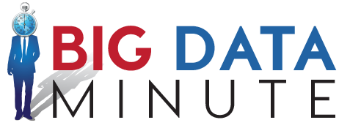
by Rich Benvin | Jul 28, 2015 | Case Studies, Measuring Results
Reliable Reports and Metrics Improve Customer Service
In the initial phases of the telephony over Hybrid Fiber Coax, one of the largest Multi-System Operators (MSO) in the broadband industry knew they had issues with both customer installations and customer satisfaction, but lacked the ability to identify the extent of the problems or the reasons behind them. The organization called upon Cliintel to develop a system to capture reliable, actionable data and to assist them with interpretation of that data.
The Business Issue:
The corporate telephony field operations group at the MSO needed a better understanding of the total installation process. This group was receiving conflicting information around the daily installs from disparate markets across the United States, each of which were performing thousands of installs per day. Reporting was not standardized, and the accuracy of information was very much in doubt.
To manage the situation, the MSO needed to:
- Identify which data was important to capture
- Design a reliable means to obtain the data
- Determine how to interpret the data
Management wanted to know the reasons for procedural problems during an installation, how long the installs were taking, and set a reasonable baseline a true time per task. Additionally, they wanted to find out the causes of the number of “no shows” for service appointments
As new procedures were adopted, installation times and “no shows” were reduced resulting in revenue generation in excess of $10M.
The Solution:
Cliintel worked with the MSO to identify and source all of the critical data points. This included creating Reason Codes to describe why an appointment was missed, cancelled or rescheduled. Additionally Cliintel resources created business rules for allocating technician drive time. Once the critical data elements were identified, an automated reporting system was developed and deployed. This system greatly reduced the “human error” element that had confounded earlier attempts at manually gathering data. Meetings were facilitated between the corporate and individual market groups to define the standards against which the data would be measured, such as: How long each type of job should take? The meetings were continued as reports were made available to the organization on a daily, weekly, monthly and quarterly basis. Charts, tables and graphs were utilized to help the organization understand the data. The meetings with the corporate and market groups continued to aid the organization in understanding what it was seeing and to develop strategies to deal with the identified problems.
The Results:
Trends were uncovered highlighting problems with provisioning efficiencies, installation times and customer satisfaction levels. These trends were identified in the reports and provided decision support and agnostic intelligence, actionable at the various levels within the organization. The publication of the results enabled the global installation standards team to identify new procedures to address the trends. As new procedures were adopted, installation times and “no shows” were reduced resulting in revenue generation in excess of $10M. A concurrent rise in customer satisfaction levels confirmed that the team had identified the important variables. This was a two-year project that left the MSO with a reporting tool that worked to help the organization understand and improve the daily installation process for the telephony product line across the enterprise.
We’re proud to help our clients solve tough problems and achieve stunning results. To see what kind of results Cliintel can deliver for you, please visit www.cliintel.com or e-mail askcliintel@cliintel.com.

by Tara Buck | Jul 27, 2015 | Case Studies, Measuring Results
Reducing Reporting Redundancies, Targeting and Consolidation Save 250 Hours per Month
Broadband operators rely on the billing systems to provide them with accurate and timely reports. These reports are crucial to day-to-day operations, and are increasingly important for both strategic planning and the execution of business goals.
The Client:
A region in one of America’s biggest Multi System Operators responsible for 250,000 customers.
The Business Issue:
The client was using time intensive manual processes to develop reports required to support ongoing business. Various queries were used to retrieve data from the billing systems, often times delivering inconsistent results across differing reports. The standard practice was to run and merge multiple reports from these queries, then copy the results from these queries and other sources into spreadsheets for further manipulation, all to arrive at questionable data. Coordination of reports between departments and groups was non-existent and there were no standardized Methods and Procedures (M&Ps) for developing these reports. The reporting group was stretched beyond capacity resulting in a multi-week backlog for the generation of new reports. The client retained Cliintel to help streamline and document the reporting process.
By identifying redundancies and targeting inefficient processes Cliintel achieved a reduction in internal resource workload by 250 hours/month, improved report accuracy, increased customer satisfaction and a return on the investment in less than 4 months.
The Approach:
Cliintel takes a holistic approach to every business issue presented for resolution. Our project professionals evaluate the situation, design a solution that fits, gain adoption and optimize performance. Cliintel’s focus was on increasing productivity and reducing costs by examining and evaluating reports for each department – independently and thoroughly. Using this holistic approach, Cliintel interviewed and met with end users in 8 departments to assess their reporting needs and to identify redundancy. Cliintel performed a gap analysis and inventoried and performed an audit of many of the crucial reports needed for day to day business operations. Labor intensive and inefficient manual processes were targeted and re-engineered. Consolidation opportunities were identified and redesigned.
The Solution:
Cliintel designed and developed new queries extracting only the relevant data necessary for each report. Database clean-up tools were created to ensure the accuracy of the data and work processes were streamlined to consolidate redundant reports.
Additionally Cliintel:
- Identified and re-designed current reports and procedures
- Implemented a strategic plan that included process re-engineering and system enhancements
- Implemented a KPI plan and provided ongoing KPI analysis framework
- Provided recommendations for further enhancements
- Provided a base for future reporting development
The Results:
By identifying redundancies and targeting inefficient processes Cliintel achieved a reduction in internal resource workload by 250 hours/month, improved report accuracy, increased customer satisfaction and a return on the investment in less than 4 months.
We’re proud to help our clients solve tough problems and achieve stunning results. To see what kind of results Cliintel can deliver for you, please visit www.cliintel.com or e-mail askcliintel@cliintel.com.

by Bill Decker | Jul 7, 2015 | Business Intelligence, Measuring Results
Since Robert Kaplan and David Norton popularized the “balanced scorecard” approach to managing business performance in 1996, senior executives have eagerly embraced its prescription for measurable objectives and key performance indicators as the answer to all business problems. At the top of the pyramid, enlightened corporate leaders understand the need for strategic direction and solid KPIs that demonstrate progress toward strategic goals,
facilitated by comprehensive business intelligence. But too often, the connection isn’t made between “big picture” strategy and the activities of front-line employees further down the pyramid.
Today, corporate leaders live by robust sets of metrics that track their contributions to profitability, customer satisfaction, and employee retention. Their employees likewise focus on their individual numbers for sales, customer response time, and professional development. Unfortunately, because they may not really understand the relationship between their daily performance and their company’s strategic direction, much can get lost in translation. Widely disseminated business intelligence can be the missing link.
Strategy vs. Metrics
In a cable company call center, for example, customer care agents pay close attention to statistics like time spent with each customer and the abandon rate for incoming calls. These metrics are factors in a company-wide strategic pursuit of happier, more loyal customers. But without business intelligence that illustrates the relationship between customer loyalty strategy and call center metrics, progress can stall. Even the most conscientious employee may rush a customer call to meet a time target, ultimately damaging the relationship that is the core of business success. Business intelligence helps all employees see both the forest and the trees.
Your Business Intelligence Advisor/Knowledge Broker
For many companies, the most effective way to bridge the divide between the top and bottom of the organization chart is with assistance from an independent business intelligence advisor skilled in communicating with people at all professional levels. An objective consultant can bring a fresh set of eyes to longstanding issues, acting as a knowledge broker between the executive suite and employees in the field. The resulting business intelligence tools will give everybody the information they need to improve. Look for an advisor who understands business performance and the technical tools available to resolve issues, and who is experienced in breaking down organizational barriers of culture, resources and education.
Share the Wealth: Business Intelligence for All
Limiting your view of business intelligence to performance measurement will limit its impact. Executives are often nervous about distributing corporate-level data such as risk management and financial reports too broadly. While there may be legitimate reasons for such concerns, they should be weighed against the value of building the most well-informed workforce possible. An organization’s leaders know what happened and when, but the people with first-hand knowledge of why it happened are usually in field offices. Making your organization’s business intelligence widely available at all levels lets the C-suite learn from the field and vice versa. Isolating information limits your company’s ability to get smarter.
To learn more about business intelligence software, please visit www.cliintel.com or e-mail askcliintel@cliintel.com.

by Bill Decker | Jun 5, 2015 | Business Intelligence, Measuring Results
How dirty is your data? As business intelligence experts know, the answer to that question can have a tremendous impact on your organization’s efficiency. And although it may sound unsavory, the truth is that unreliable information, aka dirty data, is a common business intelligence problem for large companies.
Dirty data becomes a problem as businesses grow over time. As stores, offices, warehouses, and plants are established and enhanced, data systems multiply. Lack of standardization among these systems may allow users to produce inconsistent, invalid, or duplicated information, or simply fail to enter critical information.
While it may not have been a practical or intentional choice, lack of standardization allows for the adoption of different business rules and data systems across the company. Sites may use different sets of codes to represent similar products, services, or entities such as vendors, customers or lines of business. Data systems in use at some locations may collect information from users into free-form entry fields instead of using a “pick list” of options, increasing the likelihood of incorrect entries or multiple versions of a single value resulting from misspelling and typos. Furthermore, these systems may allow certain values such as names, addresses, or dates to be unexpectedly overwritten, limiting the ability to track historical events or create accurate business intelligence trend reporting.
When dirty data finds its way into reports, the results can be inaccurate and unusable, with important information distorted, excluded, or even multiplied many times over. When this happens, the hunt for meaningful, actionable business intelligence can become a laborious, never-ending quest.
Companies may not be aware of the full extent of their business intelligence problems, or may accept them as an unfortunate fact of life. Even if you know where the problems lie, you may have to follow elaborate and repetitive procedures to gather the business intelligence you need to succeed. Dirty data makes it difficult to consolidate and measure business results. Inaccurate and missing information prevents decision-makers from getting answers to their important questions about your business.
To evaluate the health of your data, consider the following business intelligence questions:
- Do you find yourself doing the same repetitive tasks each month to compile clean data?
- Is it difficult to answer questions about your business using your data?
- Do you regularly follow extensive procedures to retrieve and consolidate companywide data?
- Do you spend too much time analyzing your business and not enough on decisions that will move the company forward?
If your best analysts are spending the majority of their time compiling the data required to create reports, and the results always arrive at the last minute or past deadlines, it’s time to look into the role of business intelligence in your organization. Tackle the problem head-on with an experienced business intelligence expert who can identify and address dirty data issues, homogenize data across different systems and standards, and consolidate company-wide data so it is accessible and reportable whenever you need it. You’ll be on your way to creating a more strategic and action-oriented environment where those over-worked analysts can focus their efforts on analyzing results instead of preparing them.
To begin the process of addressing data quality, your business intelligence partner will need to understand your organization’s goals. Where do you want to be in five years? What has been keeping you awake at night? Identifying strategic priorities will help you outline a plan which focuses on the most relevant and critical information.
To establish high-quality, reliable data, the business intelligence team will filter, merge, standardize, and validate records, all with the end goal of simplifying life for the end user. But creating a great business intelligence solution involves much more than database management and coding. The process will likely involve identifying areas where company standards and business rules can be added or improved, and getting consensus from stakeholders to define the rules that will prevent future problems.
Working with the right business intelligence partner, you’ll ultimately find the treasure that every large business dreams of: a centralized, authoritative source of data, married to a business intelligence system that analyzes your business to pinpoint critical problems and highlight favorable opportunities, and then reports the results you need to measure progress and plan for the future.
Business Intelligence, Operational Efficiency and Dirty Data
by Paul Ousterhout, Business Support Expert
To learn more about business intelligence, visit www.cliintel.com or e-mail askcliintel@cliintel.com

by Richard Batenburg | Feb 12, 2015 | Business Intelligence, Measuring Results
After speaking at the recent Management World 2010 conference in France, I was struck by the reaction of a Dutch IT engineer in the audience. The conference is presented annually by TM Forum, the world’s leading industry association for information technology in communications and media. We had presented a case study on the impressive customer care results achieved by a large telecommunications company through effective deployment
of business intelligence. Waiting his turn in a line of enthusiastic operations executives, this gentleman was puzzled.
“Please don’t be offended,” he said, “but what you’re describing isn’t rocket science.”
He was right. In fact, customer care is not rocket science – it’s way more complicated! For telecommunications companies delivering 24-hour service to millions of customers across the country, the technical operations function bears no resemblance to NASA mission control. Instead of focusing all energy and resources on a single mission, a large telecomm provider must accomplish half a million customer care missions every week. Unlike true rocket science, the mission isn’t performed by a small, elite corps of highly trained individuals with the “right stuff,” but by tens of thousands of regular folks, week in and week out, year after year after year.
These people need simple information to accomplish their missions every day. But many companies fail to provide this basic resource for customer care success. Some even believe that complexity and mystification are impressive. In reality, companies attempting to deliver excellent customer care must provide simple solutions that employees can adopt quickly so they can serve their customers well. It begins with a few simple concepts:
Great Customer Care Depends on Everyone Using the Same Yardstick
In organizations with large field operations, it’s not unusual for each location to measure its performance a little differently. But unless everyone is held accountable to the same standards, measurement becomes meaningless and customer care suffers. Begin your customer care work by establishing key performance indicators that are measured consistently across the organization.
Great Customer Care Depends on Information for All
It’s hard to improve productivity if you don’t know how your performance stacks up. Don’t hoard information – spread it around, from CEO to front-line employees. Access to current information makes an especially dramatic difference for work group supervisors, who often don’t have extensive management training. They need hard facts to manage customer care effectively. Constantly updated information on their team’s performance compared to others is the basis of objective discussions that help employees improve customer care steadily and consistently.
Great Customer Care Depends on Usability
To bring the ocean of data to life for your employees, deliver it through a simple user interface that responds to queries posed in common, “lay person” language. Making it easy and intuitive for the user encourages adoption.
Great Customer Care Depends on Carrots, Not Sticks
Don’t use business intelligence to punish poor performers. Instead, use it to reward those who beat the standard and motivate the rest.
Our client focused on reducing late arrivals for service appointments and reducing repeat service on installations. The business intelligence technology behind their customer care effort is complex, but the point of it is to empower employees to understand and take charge of whatever they control. The system the client now uses pulls data from more than 20 source systems to manage more than two million new records per day and deliver information clearly and simply to 3,000 front-line users serving 25 million customers.
Of course, all that behind-the-scenes complexity is transparent to the user. Since deploying business intelligence according to the principles outlined above, the client has seen a steady and continuing improvement in both its service issues. It’s not rocket science, but it is, without question, a real and on-going customer care success.
To learn more about business intelligence and customer care, please visit www.cliintel.com or e-mail askcliintel@cliintel.com.

by Richard Batenburg | Feb 4, 2015 | Business Intelligence, Measuring Results
If you want your business intelligence system to power your company over the rough terrain ahead, make it accessible to every level of your organization. The most successful solutions continuously deliver vital, current information to the front lines to help them drive the organization forward. This “four-wheel drive” approach of distributing data beyond the executive suite to all corners of the organization is the next step in the evolution of business intelligence.
First, use your data to develop key performance indicators for every department. These KPIs support the business imperatives that drive organizational decisions. Broad-based familiarity with key performance indicators and the data behind them will ensure that goals are aligned throughout the organization. Actionable messages from the executive suite will be consistently transmitted, inspiring divisional and regional leaders, supervisors, and ultimately, customer-facing agents. This is the real power of business intelligence in action.
Next, go viral with your business intelligence. Internet users know that the most popular websites are those that are updated regularly. Similarly, if you want business intelligence to spread quickly, give everyone in the organization continuous access to fresh data via a simple user interface that responds to queries posed in common, “lay person” language.
Online Analytical Processing (OLAP) techniques allow your IT staff to update data affordably, multi-dimensionally and in real time, facilitating convenient correlation of data points and tracking of key performance indicators from all corners of the organization. With access to this business intelligence, users across the company can query based on their own specific interests – no more waiting for an overloaded IT department to produce canned reports that are out of date when they arrive. IT staff become agents of empowerment instead of producers of reports.
The final step in developing four-wheel drive business intelligence is making access painless and rewarding for users. A skilled business support system provider can develop customized tools that are not only easy to use, but also reduce users’ workload. The provider should work closely with a cross-section of employees, ensuring a business intelligence solution that is essentially created by users for their peers. The result will be intuitive and eagerly adopted, minimizing training costs and user resistance. An agile development approach can give users access to some elements of the system early in the process, delivering an early return on investment and creating enthusiasm that will spread across the company.
We have seen this approach to business intelligence revolutionize several large organizations with a reputation for very difficult reporting and metrics practices. One system currently in production pulls data from more than 20 source systems to manage more than two million new records per day and deliver information to 3,000 front-line users serving 25 million customers.
To learn more about business intelligence solutions, please visit www.cliintel.com or e-mail askcliintel@cliintel.com.












Recent Comments